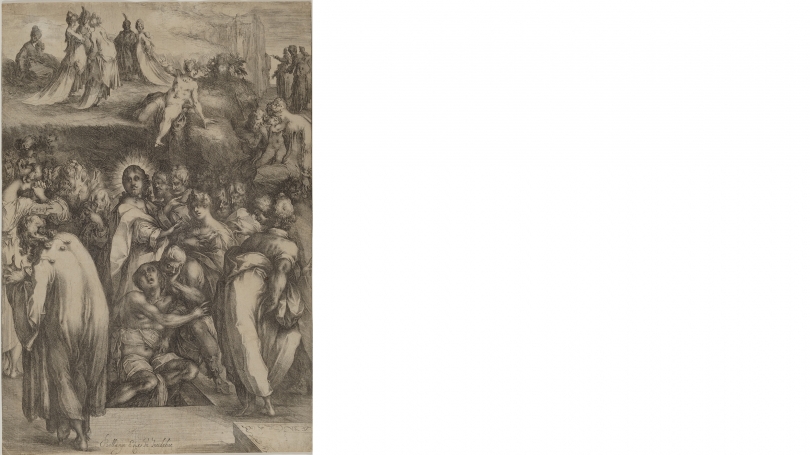This intricate work, with its spot-lit figures against richly nuanced tones of grey, is thought to be possibly Jacques Bellange's last plate and exemplifies the artist's rich and sophisticated etching technique. The images shows the moment when Lazarus's burial clothes are removed and many present are turning their heads away or shielding their noses from the stench. The two most prominent female figures here are probably Martha and Mary, and the group on the right may represent the Holy family with the infant Jesus. The naked youth, seated on the edge of the cliff, appears to draw the attention of the disparate constituents of the composition to the miracle before them and may be a portrayal of John the Baptist prophesying Christ's divinity and redemptive sacrifice.
Bellange (French, active about 1595–1616) was famous during his lifetime more for his paintings than for his etchings. During the first decades of the seventeenth century, he was court painter to the dukes of Lorraine, an independent duchy near the border with Germany, now a part of France. Unfortunately, nearly all of Bellange's paintings, many of which decorated the walls of the ducal palace and other official buildings, have been lost. Gone too are his ephemeral designs for costumes and decorations for ducal processions, court festivals, the ballet, and carnivals. Surviving the centuries are forty-eight etchings and a few drawings, all of which identify him as a stunning artist. Today he is considered one of the greatest printmakers of the seventeenth century.
Related Links
- Dartmouth Faculty: Bring Your Class | Learn how Dartmouth faculty use works like this to teach on topics as diverse as relgious experience and HIV/AIDS as a modern plague.
